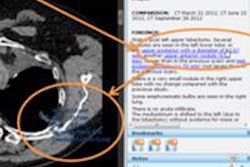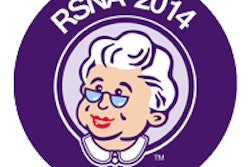
SAN DIEGO - As a specialty, radiology is fighting to become more visible, and one solution is for radiologists to communicate exam results directly to patients. But is this really what patients want? That question was explored at this week's American Roentgen Ray Society (ARRS) annual meeting.
There has been considerable interest in improving radiology reporting practices, but the focus has mostly been on report quality, format, content, and turnaround time, rather than the method of delivering results, said study presenter Dr. Mark Mangano of Massachusetts General Hospital.
"Radiology reports serve as the primary interface between the radiologist, the patient, and the ordering physician," Mangano said. "So we need to know how patients prefer to receive their exam results and what type of results they prefer to receive so that we can determine how to use this information to move toward increasingly patient-centered care."
Mangano and colleagues distributed anonymous surveys to adults undergoing CT or MRI exams at two separate outpatient imaging centers over a three-week period in June 2013. They received 643 responses, and patients were satisfied overall with their experiences in the radiology department. On a scale of 1 to 5, with 5 being the most satisfied, they gave a mean score of 4.5.
When exam results were normal, 34% of patients chose to receive the information by telephone from their referring physician, 25% chose an emailed copy of the report, and 24% chose to receive a paper copy of the report in the mail. Only 12% of survey participants chose to receive their normal results from a radiologist by phone, and only 3% chose a face-to-face meeting with the radiologist.
For abnormal results, 48% of patients said they preferred a phone call from their referring physician and 27% said they would like a face-to-face meeting with the ordering doctor. Meanwhile, 14% of respondents said they would like to receive abnormal results from the radiologist and 8% wanted to meet with the radiologist.
How much detail did patients want? A lot, Mangano and colleagues found: 44% of patients wanted the same level of detail that doctors received for normal results, while 78% wanted this level of detail for abnormal results.
"The level of detail patients indicated they wanted in exam results was surprising," he said. "This may be a challenge to implement, since the report language is often complex and may not be immediately decipherable to patients."
Although the survey showed that patients prefer to receive results from their ordering physician, there may still be a role for the radiologist in delivering exam results to patients, Mangano said. In fact, 47% of survey participants said they would appreciate having contact information for the radiologist who interpreted their exam, and 14% wanted to have the option to meet with the radiologist -- thus opening the door to more direct interaction.
"While our results may initially be disheartening for radiologists seeking to develop more patient-centered practice, it's important to note that there is interest from patients in having direct contact with radiologists," he said. "They may have a particular comfort level with their referring physician, and look to that doctor to contextualize exam results. But more than 50% of survey participants were open to some form of direct contact with the radiologist. Perhaps radiologists can capitalize on patient demand for supplemental follow-up."
One idea is to establish a consultation clinic during which patients could speak by phone or in person with a resident or an attending physician about imaging results, Mangano said.
"Ideas like this could begin to shift patients' thinking, so perhaps they would be more open to receiving results from radiologists," he said.




















